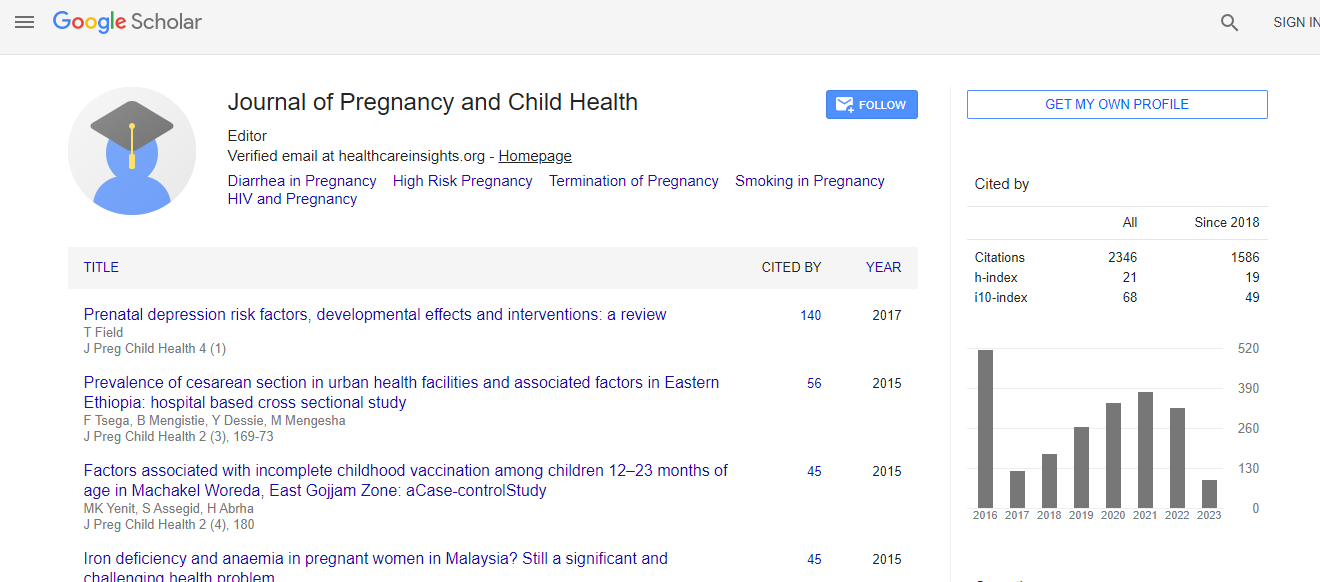Review Article
Food Preference in Toddlers: Is it influenced by Prenatal Maternal Diet?
| Samuel N Uwaezuoke* | |
| Department of Paediatrics, University of Nigeria Teaching Hospital, Enugu Nigeria | |
| Corresponding Author : | Samuel N Uwaezuoke Department of Paediatrics University of Nigeria Teaching Hospital, Enugu Nigeria Tel: +234 803 324 8108 E-mail: snuwaezuoke@yahoo.com |
| Received: June 20, 2015; Accepted: August 19, 2015; Published: August 26, 2015 | |
| Citation: Uwaezuoke SN (2015) Food Preference in Toddlers: Is it influenced by Prenatal Maternal Diet? J Preg Child Health 2:188. doi:10.4172/2376-127X.1000188 | |
| Copyright: © 2015 Uwaezuoke SN. This is an open-access article distributed under the terms of the Creative Commons Attribution License, which permits unrestricted use, distribution, and reproduction in any medium, provided the original author and source are credited. | |
| Related article at Pubmed, Scholar Google | |
Abstract
Food preference in children is molded by the interplay of genetic and environmental factors which are the most consistent feature predicting food selection. The first few years of life are acknowledged as an extremely important period for the development of food- acceptance patterns. Prenatal and postnatal exposures to flavors through amniotic fluid and breast milk have been suggested as possible influences on food acceptance since the like for flavor is the major determinant of food preference, and thus food consumption in children. Flavor transmission through the amniotic fluid during the fetal intra-uterine life is therefore a strong evidence for the influence of prenatal maternal diet on the child’s food preference early in life. Extensive research has been conducted to establish the existence of a nexus between fetal exposures in the intra-uterine life and the child’s feeding patterns in the extra-uterine life. Several investigators have indeed demonstrated a link between fetal interaction with the intrauterine environment and the acquisition of flavor and food preferences during weaning or later childhood. It is therefore safe to conclude that the child’s gustatory and olfactory exposures to flavors during the three successive stages of early development result in modifications in the expression of flavor, food and drink preferences in later stages of life. These three developmental stages are the prenatal period (fetal experience), the postnatal milk-based feeding period and early childhood (at weaning). Since prenatal and postnatal exposures to different flavors determine the extent to which innate dispositions to tastes are expressed, it is possible to formulate effective strategies aimed at increasing children’s healthy feeding patterns.

 Spanish
Spanish  Chinese
Chinese  Russian
Russian  German
German  French
French  Japanese
Japanese  Portuguese
Portuguese  Hindi
Hindi 
